| If you
want top quality be very careful to examine the turntable before you invest
your money in a used Linn, Pro-Ject, Rega, Thorens or similar high-priced deck.
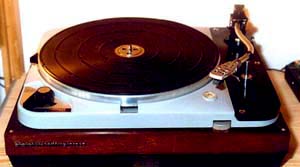
Thorens
TD 124-II from 1967-68 can still be serviced with new belt and ildler-wheel
and will serve you well if you are into both vinyl af shellac records.
Audiophiles not playing shellacs will perhaps choose a more modern TD 160,
TD 125 - or another brand.
If you are
really interested in playing records, and not a DIY mechanic, then find
yourself a relatively new turntable that is still in production, if a
DIY-person there are lots of old decks around. 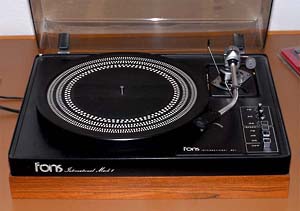
Fons
CQ30 is what I'd call a "dark horse". Sweet sounding with SME tonearm
and Ortofon OM cartridge, adjustable speed for all record types. But
beware of worn-out components that can be difficult to trace and swap. 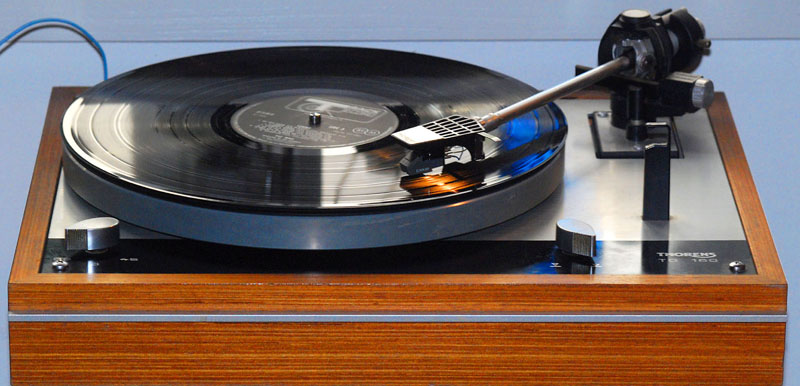
Sturdy,
easy to maintain and relatively cheap - TD 160 from the 70's is -
provided is has not been abused - a very good sounding deck with a
reasonable TP16 tonearm, that is a good match for a not too compliant
cartridge. No 78 rpm, though. 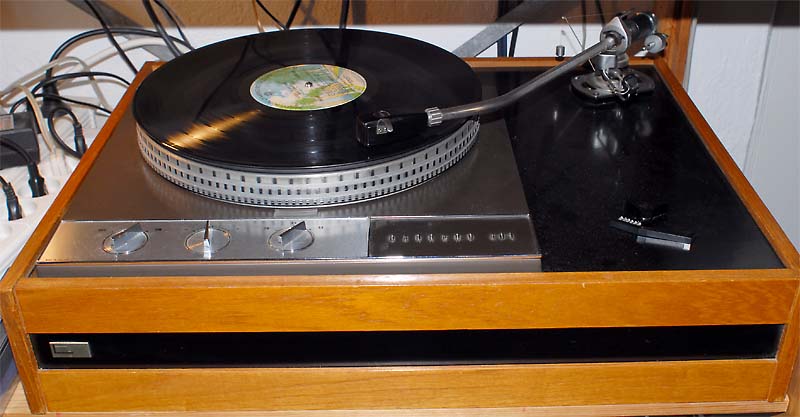
Garrard
401, here with SME 3012 tonearm and Ortofon SPU cartridge, can - with
proper restoration - still be a very fine record player, but prices
have, like in the case of Thorens TD 124, come out of proportion here and there, so think before you buy. If
you only have
modest interest in vinyl- or shellac-records, then try out the local
flea
markets. Perhaps you can find a full or almost functional turntable almost for
free, but be sure you are quite a bit of a handyman or -woman, if you follow
this route!
An older Lenco,
Garrard or Technics table can bring you in contact with your records.

Beogram
1000 tonearm is a beauty, but you are unable to use standard pick-ups,
and the 78 rpm shellacs will sound much noisier than played with a special
stylus for this kind of records. The styli are no longer supplied
by Bang & Olufsen.
|
Beogram 1000
is a
beautifully designed turntable and can be found for almost nothing in
the
local fleamarkets, maybe even supplied with a built-in (RIAA)
preamplifier. Beware, though, that even the most recent production
models are more than 30 years old now. Often there is a reason for the
low price tag.
A
few words of warning
For 78 rpm playback
the even older G42, G 610 etc. are also beautifully designed,
but styli for all Beograms must be bought from special companies like Expert Stylus in England.
Even good styli for vinyl are getting harder to find for the Beograms!
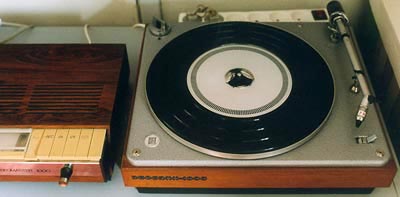
In all cases a word
of warning: If you are not comfortable with tools, soldering iron and have
an idea of what the necessary spares will cost, you may be better off buying
a turntable from your local hi-fi dealer!
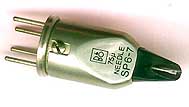 |
Beware
that the latest version of Beogram 1000 cannot play 78 rpm, and that special
75 my stylus for 78 rpm records are no longer available. The 15 my stereo-version
can still be found here and there.
Expert
Stylus England can supply you with special styli for almost any purpose,
including 78 rpm shellac records. |
Check
before you buy:
1. The turntable
must run evenly and without rumble.
2 Tonearm-bearing
must be without slack
3. Pickup must
be flawless
4. Listen for
hum
from the electronic circuits
|
1.
Motor and suspension:
The motor and other
revolving parts of the turntable should run without too much noise. If
you can hear any noise from the turntable, you have to examine it thoroughly
before investing more than your time in the project.
Often the noise comes
from a worn belt or a dry bearing, maybe transmitted through a worn or
misaligned suspension. Rather easily repaired for some handymen, but if
you are not a handyman, invest in at better and more noisefree turntable.
If the sound seems
to change up and down in speed, try to check the turntable with a stroboscobe
disc and listen very carefully to a piano-recording or similarly revealing
record.
Point a lamp towards
the stroboscobe disc, the disc placed over the spindle of the running turntable.
If the lines of the disc seems to flicker, and the sound sems to alter
in speed, then something is wrong and must be examined closer.
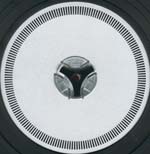
|
The
turntable can be checked for smooth running by a stroboscobe disc (here
a built-in version from Beogram 1000). Point a light bulb to the running
turntable and check for flicker.
If
the pattern on the disc seems to run in a clockwise direction, the table
is running too fast. If....
Some
turntables have adjustable speed, some not. If something is wrong, and
there´s no fine-tune possibility, you have to consider how much of
a handy-man you are.... |
2:
Tone arm
The tone arm should
move freely and without slack in its bearings. Both parameters are essential,
if you do not want to destroy your records.
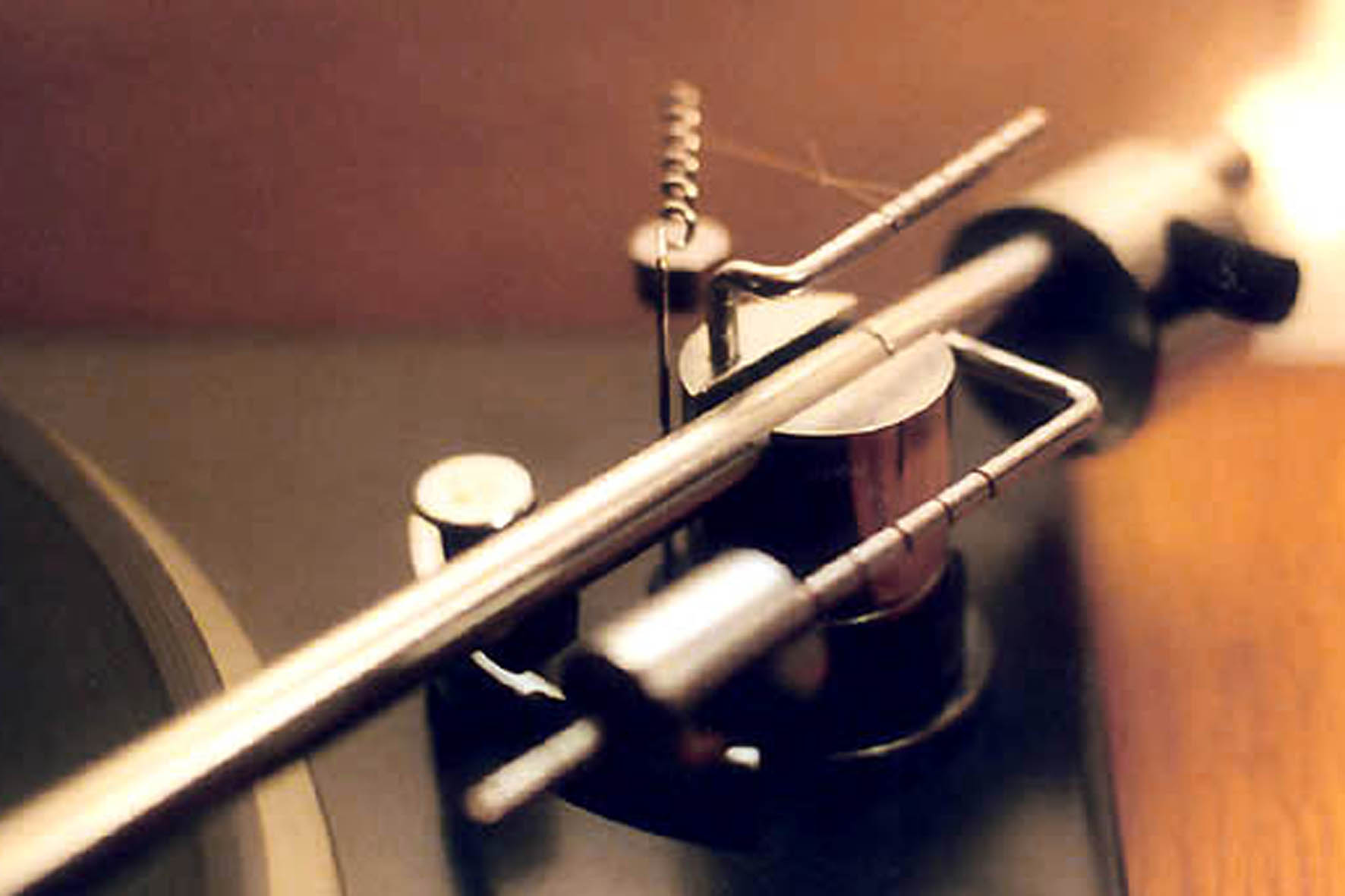
The
Lenco L-75 tonearm is often seen with worn-out knife-bearings. The steel
part of the bearing "chews up" the rubber, making vertical movement very
restricted. Josef Svalander in Sweden has the spareparts, if you don't
want to swap the entire tonearm with a better one.
A worn-out tone arm
will also affect the sound. Vibrations from the pickup can even make the
bearings "rattle"!
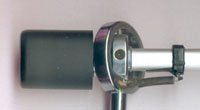 |
The
bearings of the tone arm are worn over the years.
Try
- gently - to sense the amount of slack in the bearings. There should be
nothing or vere little!
|
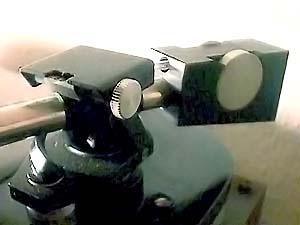
Be
sure to check both the stylus tracking force and anti-skating adjustment
knobs to see if it is still working properly.
3.
Pickup:
The pickup cartridge
is a fine piece of craftmanship and can easily be destroyed by clumsyness
or neglect.
In use over the years
the moving and magnetic parts fatigue and gets worn. Replace at least the
stylus every five years if you play a few records from time to time. More
often if you play records daily.
If you buy a used
turntable don´t hesitate to buy a new stylus if you suspect the old
one to be damaged or abused. According to Scan Micro (Ortofon) a new stylus
will last around two years, if you play one lp every day. A worn stylus
will ruin your records rapidly!
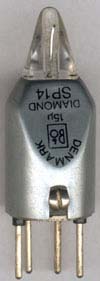
|
This
pickup was certainly abused. The tiny tube, bearing the diamond-tip is
visibly bent.
Perhaps
the tone arm has skipped across a record during a a heavy party?
Replace
before you damage your records. And do take more care about the new stylus.
|
4.
Electronic parts:
Loose wiring, bad
soldering and worn out componemts are among the many reasons for hiss,
hum and other defects in the reproduction chain - in some cases repair is more expensive than to find a different turntable.
So check the wiring, switches
and connections before you buy an old turntable.
|